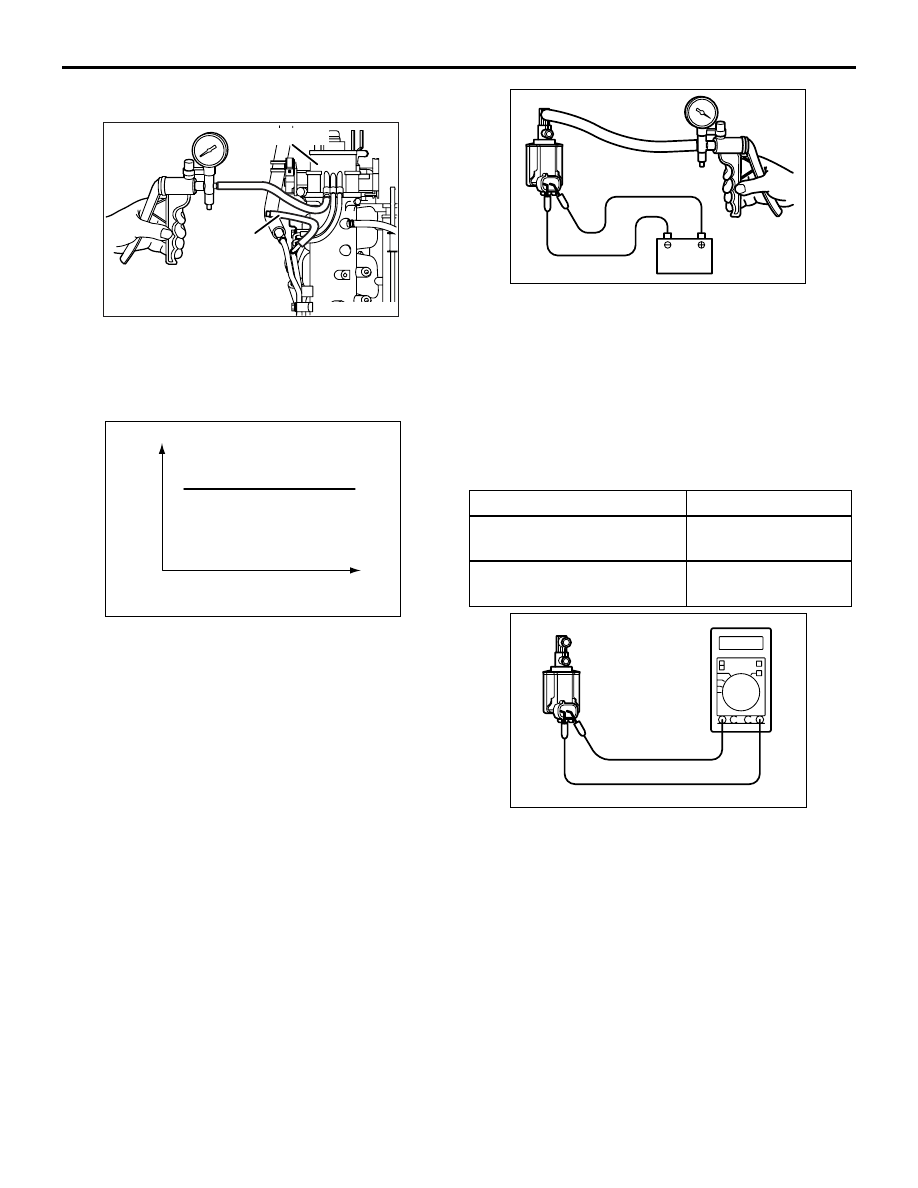Mitsubishi Lancer Evolution IX. Manual - part 358

EMISSION CONTROL <MPI>
ENGINE AND EMISSION CONTROL
17-11
PURGE PORT VACUUM CHECK
M1173001500252
AK304231AB
Red stripe
Throttle body
1. Disconnect the vacuum hose (red stripe) from the
throttle body and connect a hand vacuum pump to
the nipple.
2. Plug the vacuum hose (red stripe).
AK100011
AC
Vac-
uum
Engine speed (r/min)
3. Start the engine.
4. Check that a fairly constant negative pressure is
generated regardless of the engine speed.
5. If no negative pressure is generated, the port is
probably blocked and should be cleaned.
PURGE CONTROL SOLENOID VALVE
CHECK
M1173001700405
NOTE: When disconnecting the vacuum hose,
always make a mark so that it can be reconnected at
original position.
AK100012 AC
Battery
A
1. Disconnect the vacuum hose from the solenoid
valve.
2. Disconnect the harness connector.
3. Connect a hand vacuum pump to nipple (A) of the
solenoid valve (refer to the illustration at left).
4. Check airtightness by applying negative pressure
with voltage applied directly from the battery to the
purge control solenoid valve and without applying
voltage.
Battery voltage
Normal condition
Applied
Negative pressure
leaks
Not applied
Negative pressure
maintained
AK100013
5. Measure the resistance between the terminals of
the solenoid valve.
Standard value: 30
− 34 Ω (at 20°C)